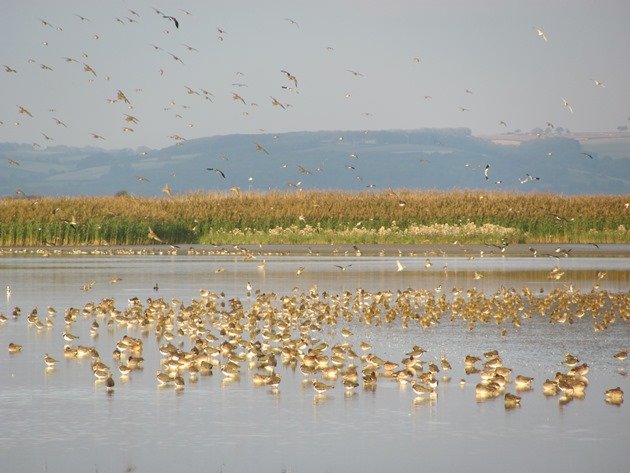
We made two visits to Alkborough Flats during our UK visit and they were both incredibly different despite both visits being late in the afternoon. Alkborough Flats is an excellent place to go birding and walking and is where the River Trent and River Ouse join to meet the River Humber. Alkborough Flats were only formed in 2006 when the River Humber burst its banks and flooded 450 hectares of farmland and it is now a haven for wildlife. Bird hides have been built and two small car-parks and one of these has wheelchair access to the trails. On entering the small village of Alkborough from either West Halton or Burton upon Stather you will see two brown signs on the church stone wall with a duck on, which indicate the area you need to head for. Only the car-park down the hill has parking with flat access to the walking trails and the car-park on the other side of the village heading towards Whitton is much larger, but requires you to walk down a permissive path through the farm down some steps to join the trail. There is an excellent walking trail that is just over 3 miles long for those with more time or who are not distracted by thousands of birds!
Alkborough Flats sign at top car-park
Walking down from the top car-park on October 5th we soon joined the wide trail and had the option to go to the right to the hide that was raised very high overlooking the ponds or go to the left towards the ponds. Due to the biting wind we chose to go left to be closer to the birds and several people met us along the way asking us if we had come for or had seen the Purple Swamphen, which had been seen initially a few months earlier and people had been coming to the area ever since! We were not looking for any bird in particular, but all birds and did not go chasing this rare visitor to the UK. We soon arrived at the hide, which had somewhat restricted views due to the reeds. These reeds were an excellent place to observe Bearded Reedlings, though and a bird species that people come to the area to see. There were good numbers of Pied Avocet, Northern Lapwings and a variety of other birds in the water in front of the hide. Common Shelduck, Northern Shoveler, Mallard, Black-tailed Godwit, Little Egrets, Ruff, Little Grebe and Great Cormorant were using the area.
Pied Avocet in front of the hide
There was a small area from the hide that you could observe the birds from and a Eurasian Curlew moved in to feed closer to us followed by several Eurasian Teal and Common Redshanks
Eurasian Curlew
Eurasian Teal and Common Redshanks
We were suddenly aware of movement directly below the front of the hide and as is no doubt often the case we are all too busy looking ahead to look beneath our feet! There was a Common Snipe moving among the reeds and before long we realised there was more than one and also a Water Rail.
Common Snipe
We spent quite some time watching all the goings on from the hide and there was a regular flight over the area by a Marsh Harrier and a Common Kestrel hovered above the reeds. We continued on a walk to the hide nearer the river and observed our first European Stonechat for the visit. By then the light was fading and we were half frozen and a plan was made to return to the area again before we returned to Australia.
Returning to Alkborough Flats on October 25th we parked in the lower car-park to get to the hide faster! Once again there were people chasing the Purple Swamphen and the Bearded Reedlings! As we walked towards the hide we were a lot more interested in the thousands of European Golden Plover literally falling out of the sky to land in front of the hide!
European Golden Plover coming in
In fact our timing could not have been better, because a few people had just spent several hours clearing the reeds in front of the hide. It had displaced the Common Snipe, but it did not take long and they were back in front of the hide investigating the newly cut reed bed. The pleasure in observing so many European Golden Plover at such close quarters meant that we did not venture any further than the bird hide that afternoon! Daylight was not on our side, so we remained there in awe of all of the birds and it was a spectacular sight.
Northern Lapwings and European Golden Plover in front of the hide
Of course there were many other species to observe from the hide and they need a mention! Eurasian Curlew, Common Redshank, Dunlin, Ruff, a lone Little Stint, Grey Heron, Little Egrets, Great Crested Grebes, Pied Avocets in smaller numbers than previously, a Spotted Redshank. and several Black-tailed Godwits. Mallards, Eurasian Teal and Northern Shoveler remained in the ponds and a Marsh Harrier soared over the area on a regular basis.
Looking towards the sky as the evening crept up on us we soon observed huge flocks of geese on the move and we had become quite familiar with this activity over the weeks we had been in the UK.
Greylag Geese on the move
Walking back to the car-park we observed Common Pheasant, Eurasian Magpie, Eurasian Wren, Chaffinch, Pied Wagtail, Bearded Reedling and a Common Kestrel. In case you are wondering about the Purple Swamphen then we can confirm it was about, but we didn’t see it! It is a bird we observe easily in Australia and there were too many other magnificent birds to see on both occasions to worry about chasing the one elusive Purple Swamphen! It had put Alkborough Flats on the birding map for a lot of birders, but despite that it was not a busy location by any means. We do not consider it busy in the UK if you can count the birders present on your fingers!


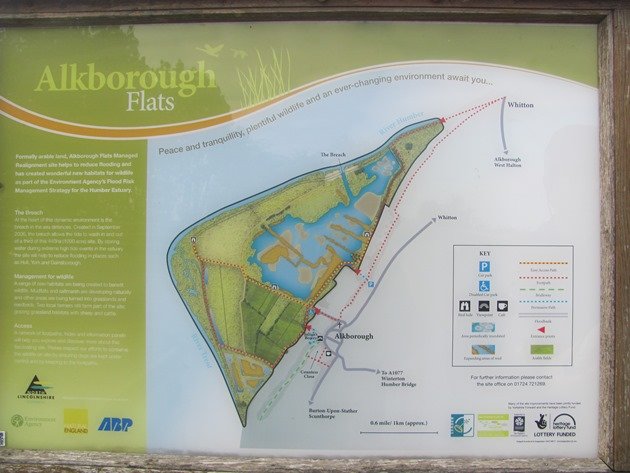
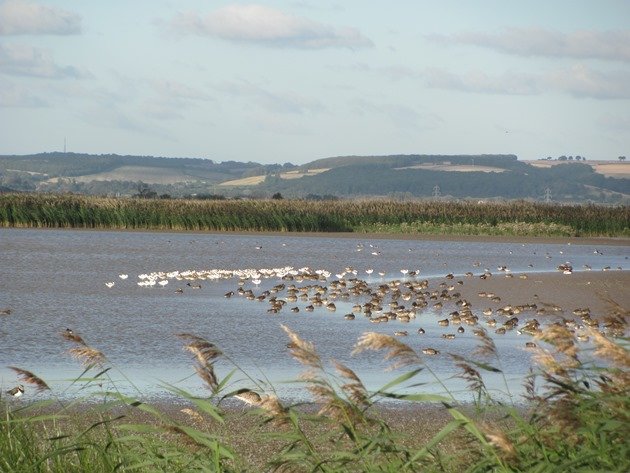
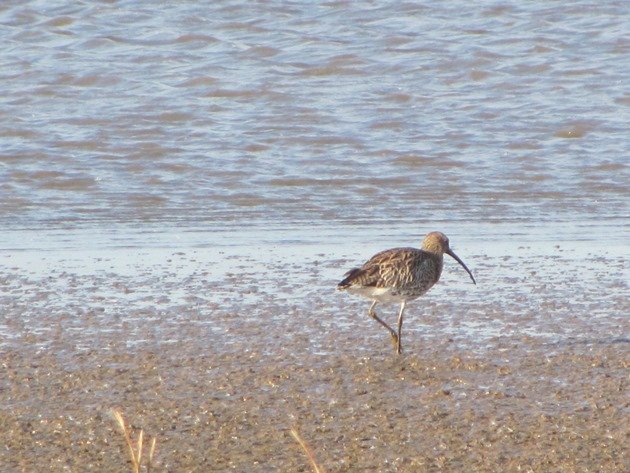
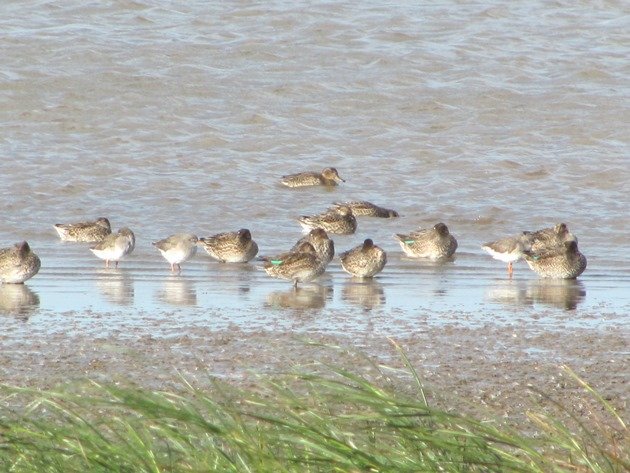
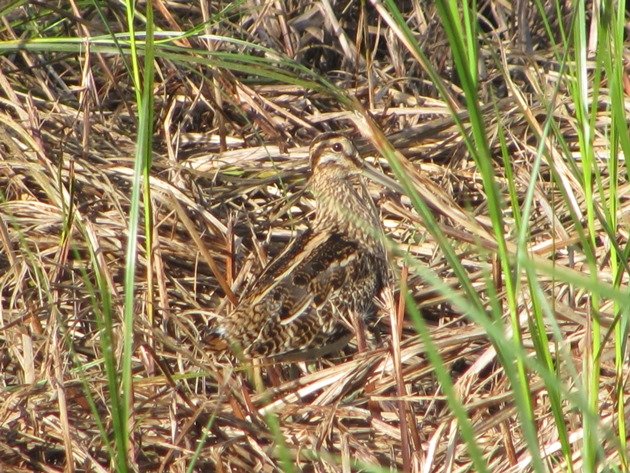
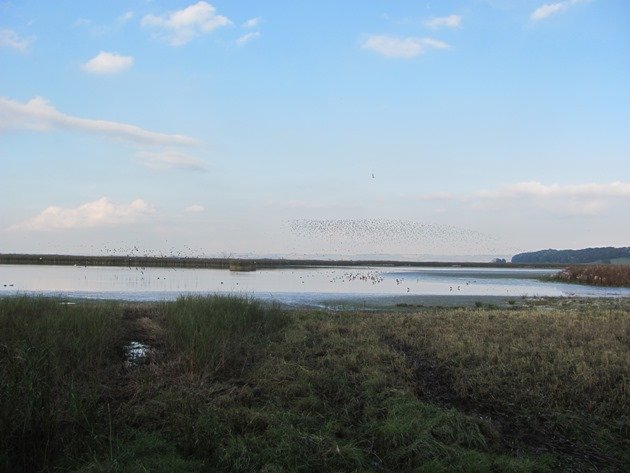
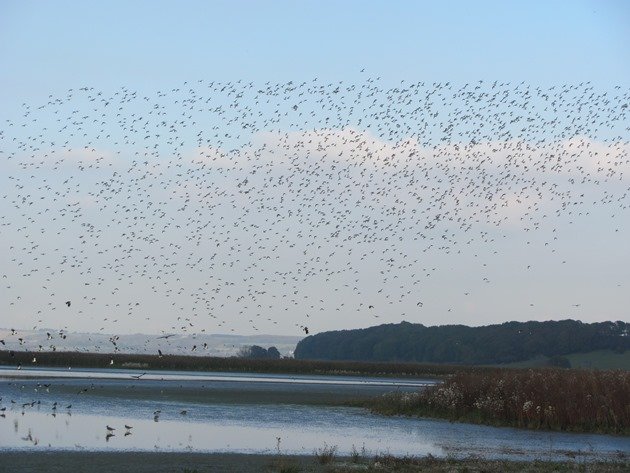
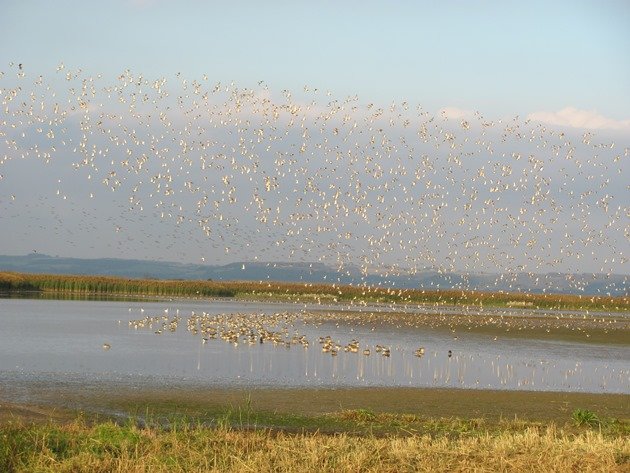
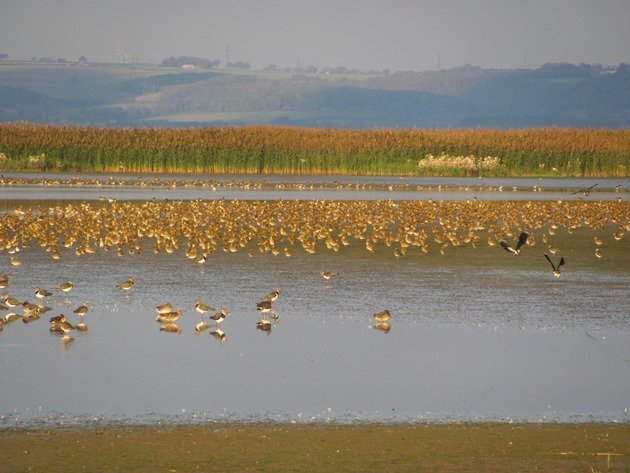
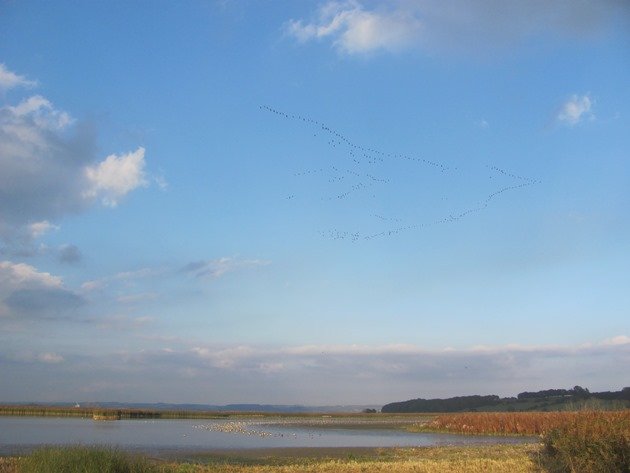
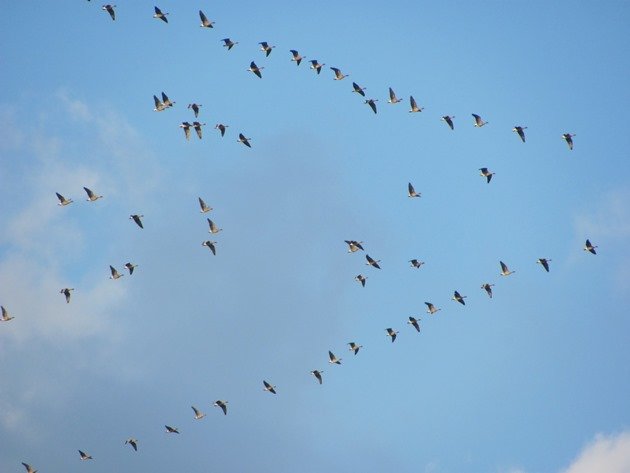
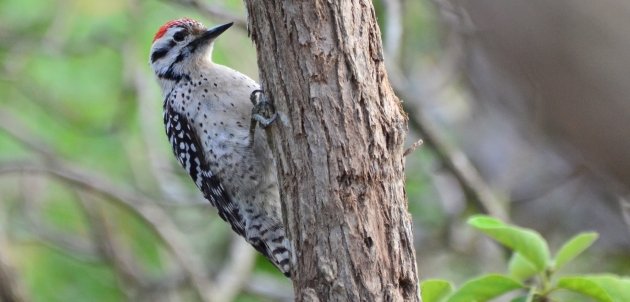
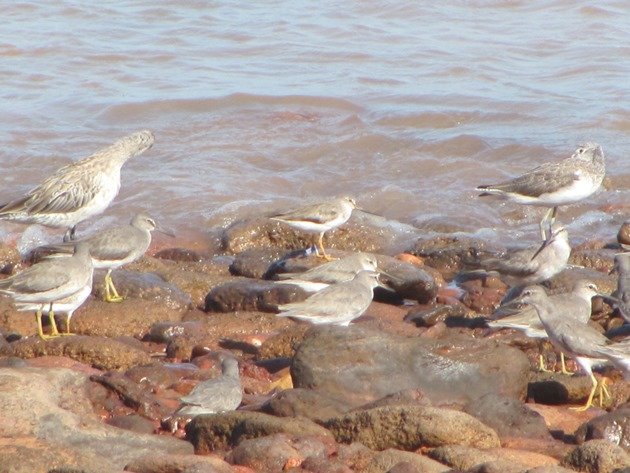

 New writers welcome – please contact us for details.
New writers welcome – please contact us for details.

















WOW!! That is some amazing bird numbers. That must be a real treat to have access to a well managed area like that. Thanks for saharing the great photos.
I love how the Brits took a flooded area and made it into a bird sanctuary. Beautiful photos of the European Golden Plovers.
Yes, it is an amazing place!